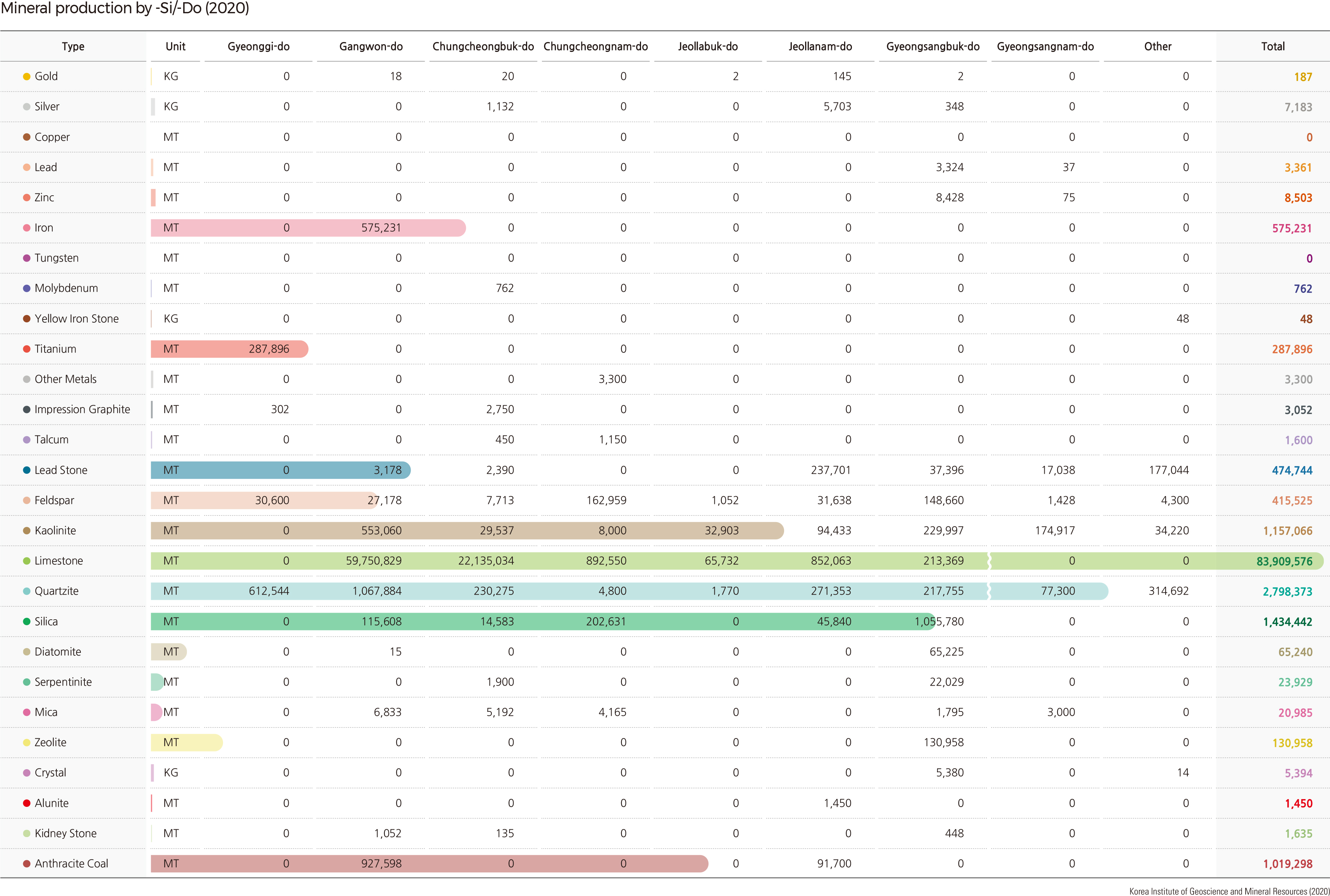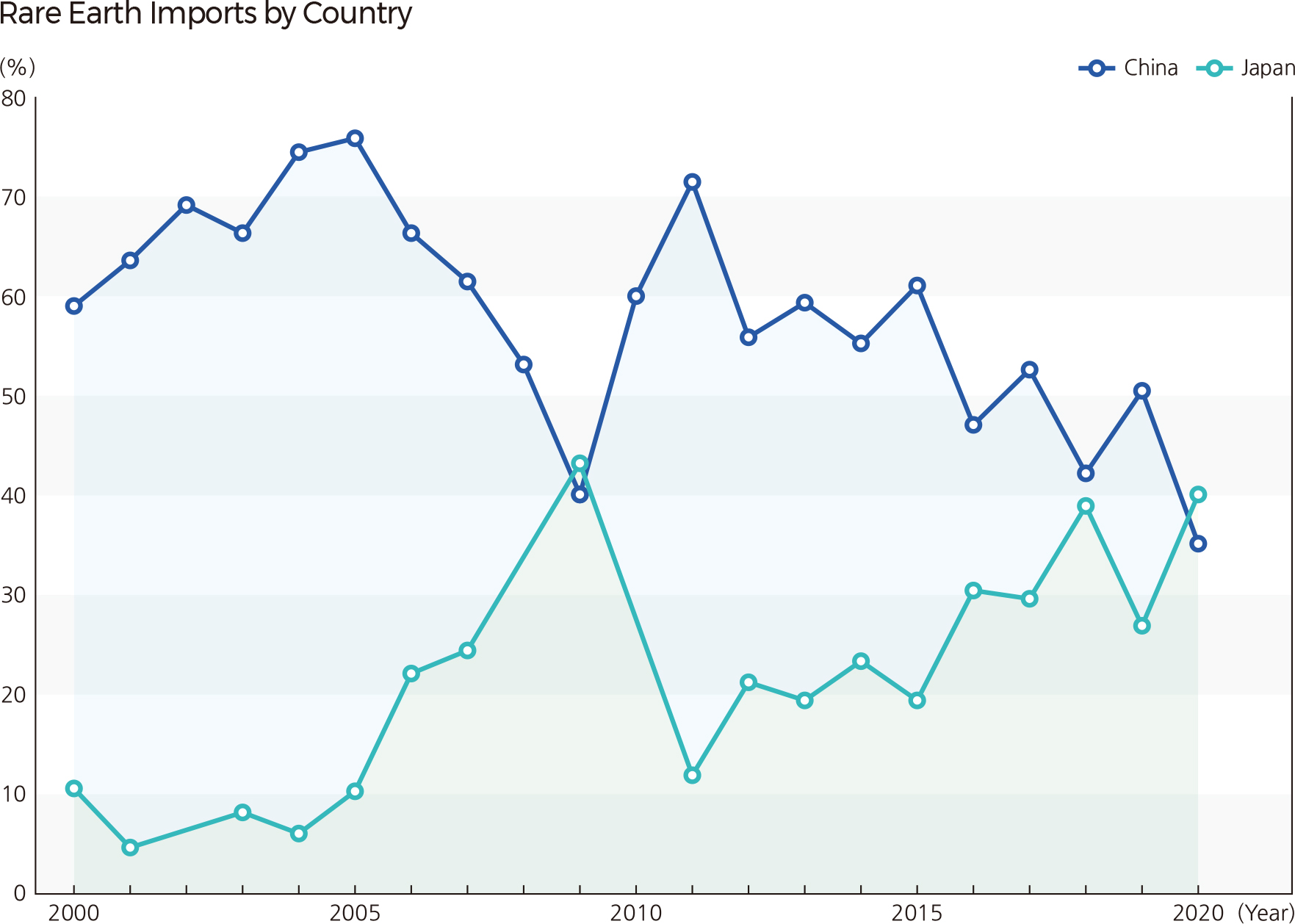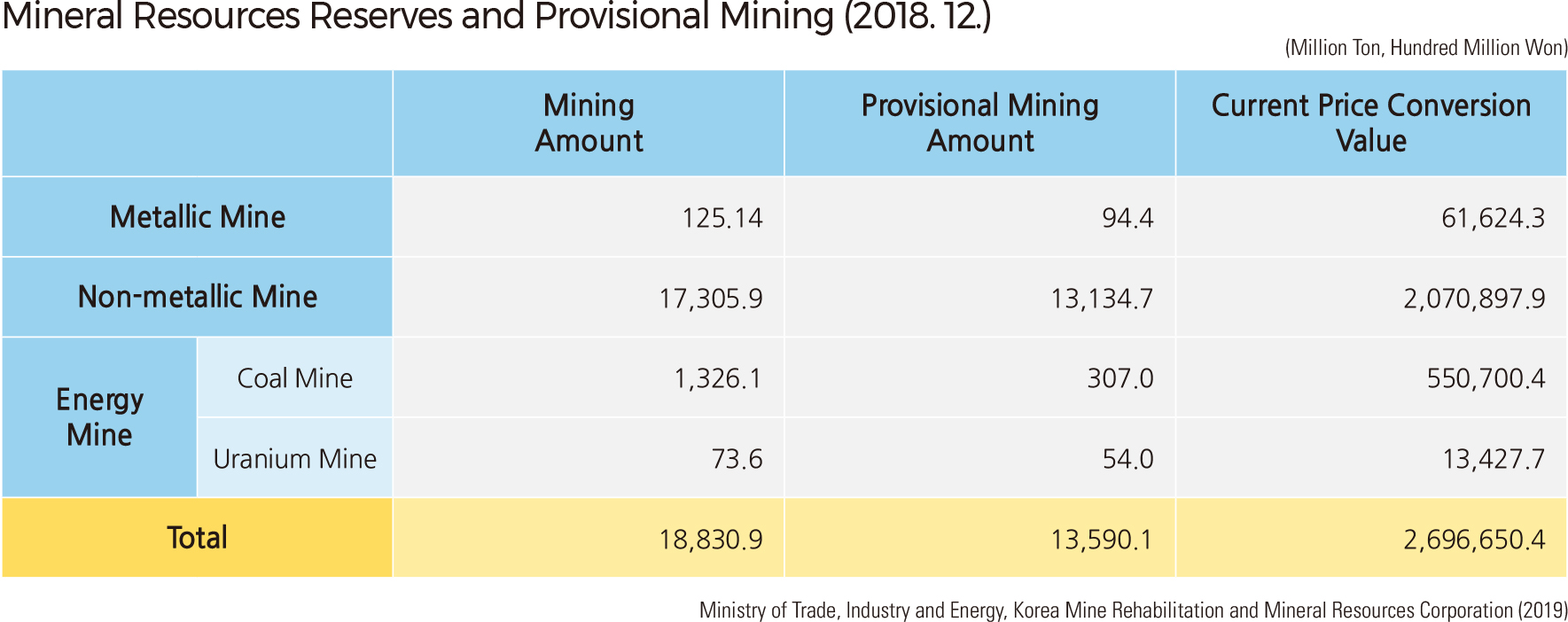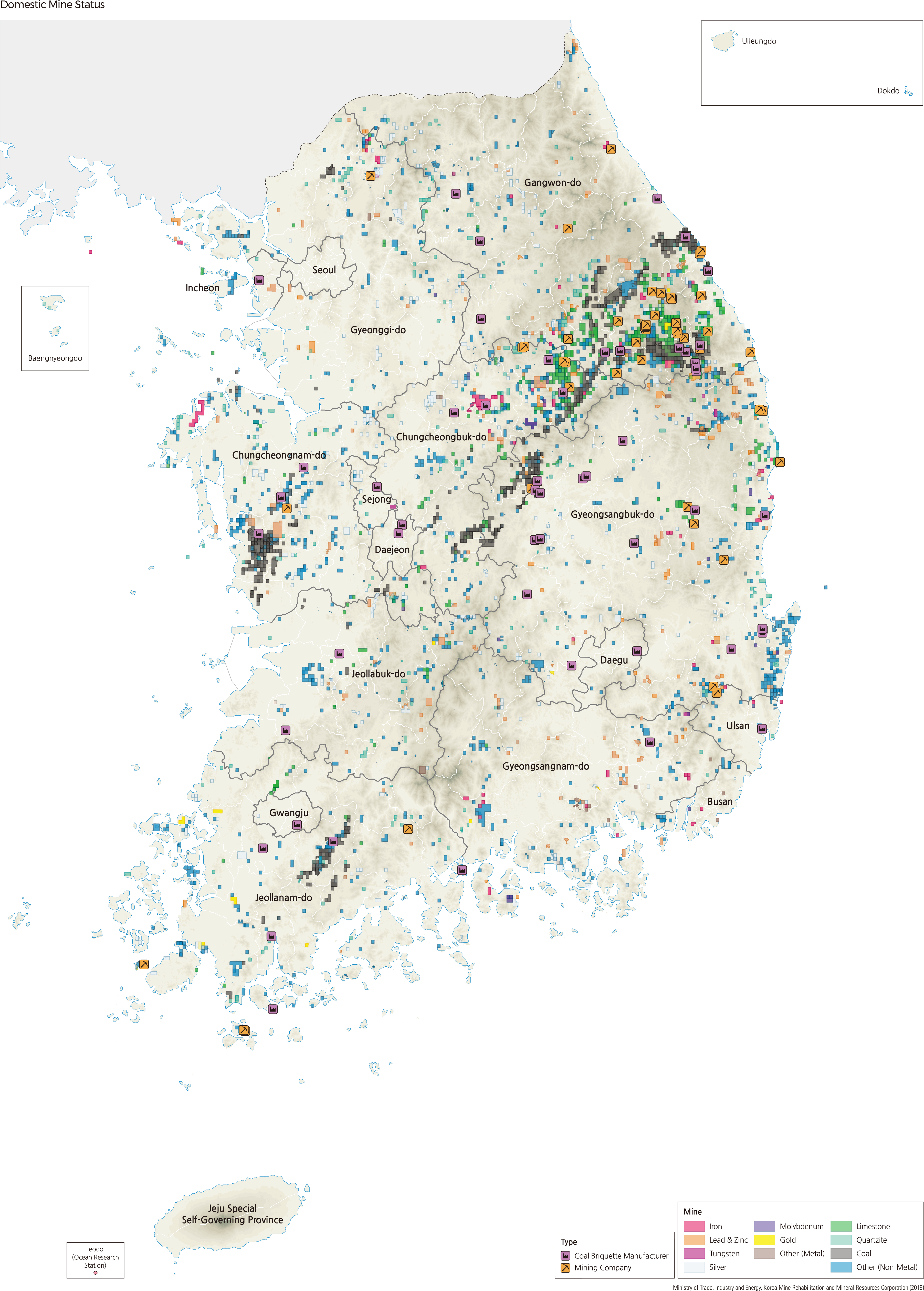English III 2021
In 2020, Korea imported a total of 26.84 billion USD of mineral resources. Of which, coal, including bituminous coal and anthracite, accounted for 35.4% (9.5 billion USD). Other major mineral imports include iron ore (6.93 billion USD), copper ore (4.25 billion USD), lead and zinc ore (3.3 billion USD, 12.5%), molybdenum ore (420 million USD), silver ore (300 million USD), manganese ore (210 million USD), and nickel ore (200 million USD). These top 10 imported minerals account for 93.5% (25.09 billion USD) of the total mineral resource imports. As of 2018, it is estimated that Korea reserves 18.8 billion tons of mineral resources (13.6 billion tons of unexploited minerals). Among them, metallic minerals accounted for 1.25 billion tons (0.95 billion tons of unexploited). Iron ore (43.7 million tons) accounts for 34.8% of total metallic minerals, followed by rare earth minerals (26 million tons), lead and zinc ore (17.1 million tons), tungsten ore (15.3 million tons), silver ore (8 million tons), molybdenum ore (6.3 million tons), and gold ore (5.9 million tons). Most metallic minerals are distributed in Gyeonggi-do and Gangwon-do. Korea reserves 17.3 billion tons (13.1 billion tons of unexploited minerals) of non-metallic minerals resources. Limestone (13.81 billion tons, 79.8%) and quartzite (2.93 billion tons, 17%) account for 96.8% of the total non-metallic minerals. Limestone is concentrated in Gangwon-do and Chungcheongbuk-do. Silicate is distributed in Gangwon-do, Chungcheongbuk-do, Gyeonggi-do, and Jeollanam-do. Other non-metallic minerals such as feldspar, kaolin, and pyrophyllite are scattered in Chungcheongnam-do, Jeollanam-do, and Gyeongsangbuk-do. Korea reserves 1.40 billion tons of energy minerals, including coal (1.33 billion tons) and uranium (0.73 billion tons). Most coal mines are in Gangwon-do. Coal mines are also located in Chungcheongnam-do (8.8%) and the Honam region (6.4%). The Korean government does not allow the mining of uranium.
Rare earth minerals are distributed in Gangwon-do, Chungcheongnam-do, and Ulsan. However, Korea imports rare earth minerals because the economic feasibility of mining rare earth minerals is low. In 2020, Korea imported 3,215 tons of rare earth metals and compounds (74.21 million USD), mainly from Japan (40.2%) and China (35.2%). The dependency of rare earth imports on China has decreased since 2011 (71.6%), while the dependency on Japan is increasing. |




